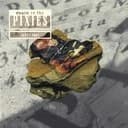Theoretical Context and Musical Purpose
The F♭ natural minor scale represents an edge case in music theory where enharmonic spelling creates unnecessary complexity. As the relative minor of A♭♭ major, this scale would theoretically appear in pieces written in that key signature, but in practice, composers and musicians universally prefer E natural minor and its relative major G major. The scale follows the standard natural minor formula (whole-half-whole-whole-half-whole-whole or 2-1-2-2-1-2-2 semitones), producing the characteristic minor sound despite its unconventional notation. Understanding this scale helps reinforce why enharmonic equivalents matter and why practical notation trumps theoretical correctness.
Scale Formula and Note Construction
The F♭ natural minor scale follows the universal natural minor pattern: Root - Whole Step - Half Step - Whole Step - Whole Step - Half Step - Whole Step - Whole Step. Applied to F♭, this produces: F♭, G♭, A♭♭, B♭♭, C♭, D♭♭, E♭♭, F♭. The interval structure (1, 2, ♭3, 4, 5, ♭6, ♭7, 1) creates the melancholic character typical of natural minor scales. However, the presence of four double flats (A♭♭, B♭♭, D♭♭, E♭♭) makes this scale notation highly impractical. These double flats are enharmonically equivalent to G, A, C, and D respectively, revealing why E natural minor (E-F♯-G-A-B-C-D-E) represents the identical pitches with far simpler notation.
Relationship to E Natural Minor and Enharmonic Equivalence
F♭ natural minor is completely enharmonic to E natural minor, meaning every note sounds identical when played, only the written notation differs. F♭ = E, G♭ = F♯, A♭♭ = G, B♭♭ = A, C♭ = B, D♭♭ = C, and E♭♭ = D. This one-to-one correspondence makes E natural minor the universally preferred spelling in all musical contexts. Similar enharmonic relationships exist between other natural minor scales, such as C♭ natural minor and B natural minor, or B♭ natural minor and its enharmonic counterpart. Understanding these equivalencies helps musicians transpose and recognize scales across different key signatures.
Notation Complexity and Reading Challenges
The notation complexity of F♭ natural minor creates severe practical problems. Sheet music written in this scale would require constant mental translation, as performers would need to interpret A♭♭ as G, B♭♭ as A, D♭♭ as C, and E♭♭ as D. This cognitive load significantly increases the risk of performance errors and slows sight-reading. The theoretical key signature would contain eight flats (including a double flat), making it virtually unreadable. In comparison, E natural minor uses a straightforward key signature of one sharp, making it instantly recognizable and easy to read. This dramatic difference in practical usability explains why F♭ natural minor appears only in academic discussions of music theory, never in actual compositions or performance materials.
Practical Recommendations and Related Scales
Musicians should always use E natural minor instead of F♭ natural minor in all practical applications, including composition, performance, analysis, and teaching. If exploring the theoretical variations of this scale for academic purposes, study the F♭ harmonic minor and F♭ melodic minor scales, though these suffer from identical notation issues. For understanding relative major-minor relationships, examine how G major relates to E natural minor (the practical equivalent). To build proficiency with natural minor scales generally, explore more practical keys like B♭ natural minor or other common minor scales. The lesson here is clear: while music theory can describe infinitely complex enharmonic spellings, practical musicianship demands clear, readable notation that serves performers and audiences effectively.





